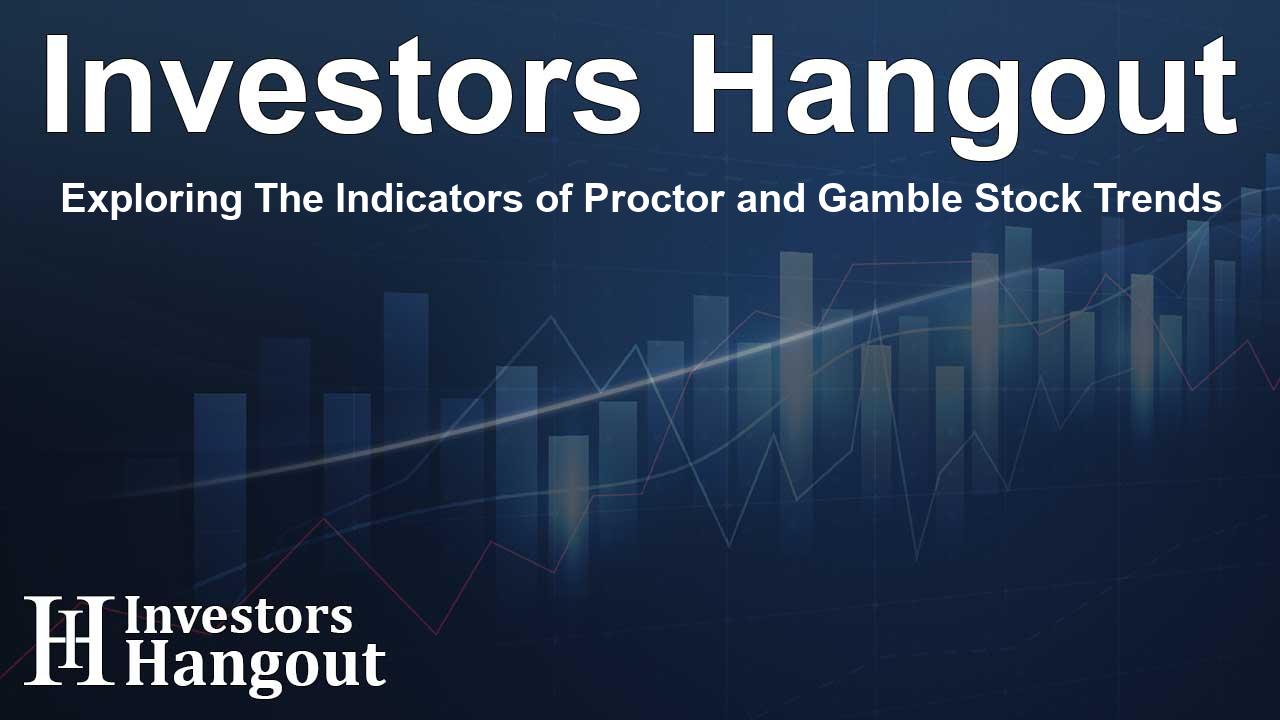Exploring The Indicators of Proctor and Gamble Stock Trends

Understanding Trading Indicators for Proctor and Gamble
In the dynamic world of trading, professionals often rely on complex models that leverage various parameters to provide trade signals. Some traders prefer a straightforward approach using just a couple of indicators, while quantitative traders might choose to utilize a comprehensive array of hundreds.
Bollinger Bands and RSI: Key Indicators
In the case of Procter & Gamble Co., represented by ticker PG on the NYSE, two primary indicators come into play: Bollinger Bands and the Relative Strength Index (RSI). These tools serve not only to identify trade opportunities but also reflect the overall market sentiment.
The Significance of Bollinger Bands
The Bollinger Band, depicted as a red line on the price chart, signifies two standard deviations above the 20-day moving average. This concept is critical, as it incorporates statistical theories into trading strategies. According to the established norms, approximately 95% of trading occurs within these two standard deviations.
When a stock, such as Procter & Gamble, surpasses this threshold, it is considered overbought. This overbought condition usually provokes seasoned sellers to enter the market, anticipating a price correction or decline back towards the mean.
RSI: Assessing Overbought Conditions
Located at the bottom of the chart is the Relative Strength Index (RSI), another instrument traders utilize to assess whether a stock has reached overbought territory. When the blue line on the RSI goes above a designated threshold, commonly marked by a red horizontal line, it indicates potential overbought conditions. This occurrence, like the trigger from Bollinger Bands, can encourage sellers to re-enter the market.
Triggering Sell Signals
A potent trading strategy may involve looking for simultaneous signals of overbought conditions from both Bollinger Bands and the RSI. For instance, in late April, although Procter & Gamble's price surpassed the upper Bollinger Band, the RSI did not indicate an overbought status, meaning a sell signal would not have been justified at that time.
Recent Market Observations
Earlier this month, the price again breached the upper Bollinger Band, yet there was no corresponding rise on the RSI, further indicating no sell signal. However, on September 10, both indicators aligned, showing overbought conditions concurrently. This alignment suggests that a market reversal may be in progress, potentially foreshadowing a downward shift in stock price.
Maximizing Trading Potential
Employing a combination of indicators like the Bollinger Bands and RSI to generate sell signals can significantly enhance profit opportunities. The trading chart for Procter & Gamble is a compelling example of this strategy in action, illustrating how indicators can inform trading decisions.
Frequently Asked Questions
What are Bollinger Bands and how do they work?
Bollinger Bands are volatility indicators that consist of a middle band (a simple moving average) and two outer bands representing standard deviations. They help identify price trends and potential reversals.
What does the RSI indicate?
The Relative Strength Index (RSI) measures the speed and change of price movements, providing insights into overbought or oversold conditions of a stock.
Why is the combination of Bollinger Bands and RSI effective?
Using both indicators together can provide a more reliable signal for traders. When both indicate overbought conditions, the chances of a price correction increase, giving traders a clearer sell signal.
How can I apply these indicators in my trading strategy?
Traders can incorporate Bollinger Bands and RSI into their trading plans by looking for simultaneous signals to improve the accuracy of their buy and sell decisions.
What should I consider when trading Procter & Gamble stocks?
When trading PG stocks, it's essential to monitor market trends, economic conditions, and the performance of the Bollinger Bands and RSI to make informed decisions.
About Investors Hangout
Investors Hangout is a leading online stock forum for financial discussion and learning, offering a wide range of free tools and resources. It draws in traders of all levels, who exchange market knowledge, investigate trading tactics, and keep an eye on industry developments in real time. Featuring financial articles, stock message boards, quotes, charts, company profiles, and live news updates. Through cooperative learning and a wealth of informational resources, it helps users from novices creating their first portfolios to experts honing their techniques. Join Investors Hangout today: https://investorshangout.com/
Disclaimer: The content of this article is solely for general informational purposes only; it does not represent legal, financial, or investment advice. Investors Hangout does not offer financial advice; the author is not a licensed financial advisor. Consult a qualified advisor before making any financial or investment decisions based on this article. The author's interpretation of publicly available data shapes the opinions presented here; as a result, they should not be taken as advice to purchase, sell, or hold any securities mentioned or any other investments. The author does not guarantee the accuracy, completeness, or timeliness of any material, providing it "as is." Information and market conditions may change; past performance is not indicative of future outcomes. If any of the material offered here is inaccurate, please contact us for corrections.